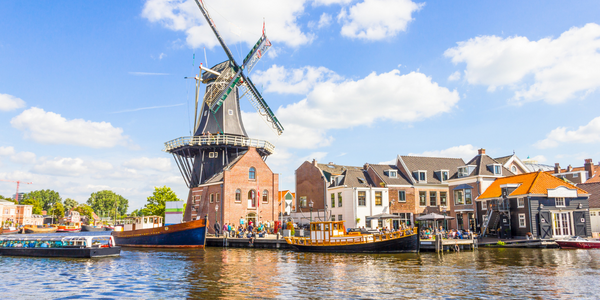Technology Category
- Cybersecurity & Privacy - Network Security
- Sensors - GPS
Applicable Industries
- Cities & Municipalities
- National Security & Defense
Applicable Functions
- Maintenance
- Procurement
Use Cases
- Cybersecurity
- Tamper Detection
Services
- Cybersecurity Services
About The Customer
The customer in this case study is the city government of San Gabriel, California, USA. This government agency is responsible for a range of vital services for people and businesses in the city. The city has about 300 employees, and the IT department consists of three people who cover everything from basic desktop support to server and network security. As a government agency, they are mandated by federal laws to ensure security, including some security for the police and fire departments. The IT department was looking for a more efficient patch management solution and a remote support tool due to the shift to a remote work model.
The Challenge
The city of San Gabriel, with a workforce of about 300 employees, was struggling with its IT support and security management. The IT department, consisting of only three people, was responsible for a wide range of tasks from basic desktop support to server and network security. However, they faced significant challenges in keeping all endpoints updated with the latest security patches, a crucial task for cybersecurity. The tool they were using, WSUS, did not provide them with the ability to control patches or gain visibility into endpoints, increasing the risk of dangerous vulnerabilities going unnoticed. As a government agency, they were mandated by federal laws to ensure security, including for the police and fire departments. The shift to a remote work model further complicated matters, necessitating a tool that could function effectively regardless of device location. Additionally, the IT team was considering a remote support tool as driving to various locations to troubleshoot issues was time-consuming.
The Solution
The IT team of the city tested several solutions, including ManageEngine and Syxsense, but ultimately chose Action1. The other tools were deemed too expensive, feature-heavy, and complex to manage. Action1, on the other hand, met their requirements perfectly, handling patch management efficiently and effectively. The team was also pleased to find that Action1 included a built-in remote desktop, eliminating the need for a separate remote support tool. Action1 provided customizable scheduling and grouping features, enabling granular control over the patching process. The IT team could easily schedule the order of services to be patched to avoid business disruptions and test patches on a non-critical group before rolling them out to critical groups. Action1's remote desktop was used daily by the IT team, providing comprehensive IT support and reducing the time to resolve an IT support request significantly.
Operational Impact
Quantitative Benefit

Case Study missing?
Start adding your own!
Register with your work email and create a new case study profile for your business.
Related Case Studies.

Case Study
Turning A Stadium Into A Smart Building
Honeywell created what it called the “intelligent system” for the National Stadium in Beijing, China, turning the venue for the opening and closing events at the 2008 Summer Olympics into a “smart building.” Designed by highly controversial artist Ai Weiwei, the “Bird’s Nest” remains one of the most impressive feats of stadium architecture in the world. The 250,000 square meter structure housed more than 100,000 athletes and spectators at a time. To accommodate such capacity, China turned to Honeywell’s EBI Integrated Building Management System to create an integrated “intelligent system” for improved building security, safety and energy efficiency.
.png)
Case Study
Smart Street Light Network (Copenhagen)
Key stakeholders are taking a comprehensive approach to rethinking smart city innovation. City leaders have collaborated through partnerships involving government, research institutions and solution providers. The Copenhagen Solutions Lab is one of the leading organizations at the forefront of this movement. By bringing together manufacturers with municipal buyers, the Copenhagen Solutions Lab has catalyzed the development and deployment of next-generation smart city innovations. Copenhagen is leveraging this unique approach to accelerate the implementation of smart city solutions. One of the primary focus areas is LED street lighting.

Case Study
Buoy Status Monitoring with LoRa
The Netherlands are well-known for their inland waterways, canals, sluices and of course port activities. The Dutch Ministry of Infrastructure indicates that there are thousands of buoys and fixed items in and near water environments that would profit from IoT monitoring. One of the problems with buoys for example, is that they get hit by ships and the anchor cable breaks. Without connectivity, it takes quite some time to find out that something has happened with that buoy. Not to mention the costs of renting a boat to go to the buoy to fix it. Another important issue, is that there is no real-time monitoring of the buoys at this moment. Only by physically visiting the object on the water, one gains insight in its status.

Case Study
Barcelona Case Study
Barcelona’s heavy traffic and its associated high levels of pollution were the primary factors that motivated some companies and universities to work on strategies for improving traffic in the city centre. Bitcarrier is one of the technologies involved in the In4Mo Project, whose main objective is to develop the applications that form the core of smart mobility, one of the fundamental pillars of the smart city concept.

Case Study
China Mobile Smart Parking
Smart Parking, powered by NB-IoT technology, is making it easier for drivers to find free parking spots. Cities can better manage their parking assets and maximize the revenue available to them as a result. Drivers searching for parking create congestion and pollution by circling and hunting for available parking. Smart Parking services are able to significantly ease these problems by guiding a driver directly to a parking space.








